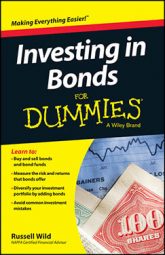For most people, some kind of in-between portfolio — perhaps with Ginnie Mae bonds and tech stocks —makes the most sense. Deciding if you want to be smack in the middle of the continuum, or prefer to hang your hat toward the mild side or the wild side, will have a great bearing on just how much you stock up on bonds or bond with stocks.
Investing in a portfolio of Ginnie Mae bonds is a conservative way to go. It's unlikely you'll get rich investing in these — or any conservative bond portfolio. But you won't be waking up at 2 a.m. in a cold-sweat panic, worried about the whereabouts of your money.
Investing your savings in the stock of a single, small technology company can, indeed, make you rich. (Think Microsoft back when a nerdy, young Bill Gates was working out of his garage.) Beware, however: Taking a financial risk on a start-up "Big Idea" with world-changing potential may deprive you of that solid eight-hour sleep your bond-holding buddy is enjoying. Wednesday's investment may be worth a fraction of what you were expecting when you finally crawl out of bed, bleary-eyed, Thursday morning.
Decide what you want to be when you grow up
The kind of portfolio you want to build depends on why you're investing. Ask yourself whether you're looking for immediate income, slow and steady appreciation, or pop-goes-the-weasel kind of growth.
Do you dream of quitting your day job as soon as possible to start a new career writing haiku poetry? Or do you want to pay for your kids' college tuition and expenses, and then finish building your retirement portfolio after that point? Do you want to drop out of society after the kids are grown, buy a 52-foot sailboat, and travel the Caribbean from island to island? These are the kinds of questions you need to ask yourself.
Fortunately, you don't need to be all that specific in your future goals to formulate a fairly good financial plan. You merely need to be somewhat clear about how much you and your partner will likely be earning (if anything) and how much you will likely be spending over a certain period of time.
Picture your future nest egg
It doesn't much matter whether intend to keep working (at least part-time) past traditional retirement age or whether you want a more old-fashioned retirement (complete with checkered pants, blue hair, and mah-jongg games). Most financial planners suggest that your ultimate savings goal be something in the order of 20 times, or even better, 25 times, your annual anticipated expenses, minus any income from Social Security, pension, or part-time employment.
In other words, if you think you'll need $50,000 a year to live comfortably at age 65 or so, and you anticipate yearly income of $20,000 from a combination of Social Security payments and, say, hobby income, your goal should be to grow a nest egg worth at the very least $600,000. Simple arithmetic: $50,000 (your desired yearly income) minus the $20,000 you're anticipating from other sources = $30,000. You'll need to make $30,000 in portfolio withdrawals to cover your years of retirement . . . meaning you'll need a nest egg of at least $600,000.

